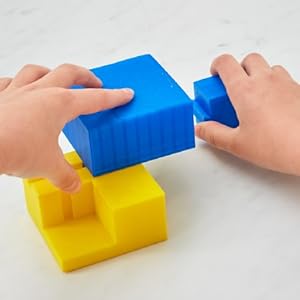(as of Aug 04, 2025 03:00:13 UTC – Details)
<
- Design your projects using free browser-based versions of CAD software Tinkercad and SketchUp.
- Follow the simple steps to create a variety of different projects.
- Learn about the fascinating science behind your creations.
- Get guidance on organizing team activities and contests.
The popular Lab for Kids series features a growing list of books that share hands-on activities and projects on a wide host of topics, including art, astronomy, clay, geology, math, and even how to create your own circus—all authored by established experts in their fields. Each lab contains a complete materials list, clear step-by-step photographs of the process, as well as finished samples. The labs can be used as singular projects or as part of a yearlong curriculum of experiential learning. The activities are open-ended, designed to be explored over and over, often with different results. Geared toward being taught or guided by adults, they are enriching for a range of ages and skill levels. Gain firsthand knowledge on your favorite topic with Lab for Kids.
Be a part of the future with 3D Printing and Maker Lab for Kids!
From the Publisher

WELCOME TO CAD DESIGN & 3D PRINTING!
In this book, we explore how to manipulate and combine materials and elements through CAD and 3D printing in a variety of ways:
Creating permanent joints and/or merging materialsRemoving material (making holes or cuts)Creating temporary joints/merging materials/limited jointsMaking complex materials through a series of manipulationsMixing different types of materials (metal, fabric, organic, etc.)


3D PRINTING PROCESS
Typically, we use polylactic acid (PLA) plastic filament for printing, but this might vary slightly depending on the printer you use. There are many models of 3D printers, but in general, these are the steps necessary before printing a CAD creation:
Ensure the bottom surface is touching the printing bed; if not, click the black arrowhead and drag it down till it indicates 0 mm (fig. 1).Export the design to the 3D printer.After the printer software has processed/sliced your design file, check to see whether the first layer of each element is sitting on the bed, or on another element (fig. 2).There should be NO overhangs greater than 30 degrees.Use a plastic file to remove any excess material.








Lab 4 – Designing Jewelry
In this Lab we learn how to remove material from a solid shape by creating holes. In Tinkercad, we can create a hole by simply using a Hole tool and inserting it into the desired location on a solid object. We will develop our skills creating holes in CAD by designing earrings.
Lab 11 – Artificial Coral Reef
In the first ten Labs we learned about various design techniques by adding, removing, merging, and resizing material. We’ll now explore more complex techniques in which we adapt our designs to interact with other materials/environments.
Lab 20 – Mini Guitars with Multiple String Types
In this Lab we learn how various materials can interact with the same structure to produce different sound. We will design a mini-guitar and test the sound using different materials for the guitar strings.
Lab 22 – Thingiverse: Downloadable 3D Models
We reverse engineered a retractable pen in the previous Lab. We saw that there were many parts to design and the button mechanism was a bit sticky. In Lab 17, we designed a 3D puzzle that also required tight tolerances on the dovetail joints. In such cases, it may be more efficient to use models that have been predesigned by someone else that meet our specifications.







